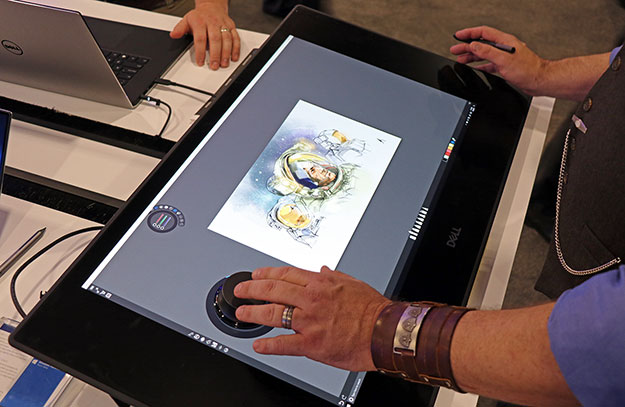Dell And Nike Showcase Why AR And VR Are The Future Of Design At Dell EMC World
For most folks, VR (Virtual Reality) and AR (Augmented Reality) may sound like all fun and games. However, at Dell EMC World in Las Vegas this week, Nike demonstrated with the help of Dell Technologies, why AR, VR and supportive input technologies like Haptics, will be the future of industrial design. Shoe design may not sound like rocket science but let’s just say the "cobbler has evolved," so to speak and actually it's rather cutting-edge these days.
Dell EMC Executive VP and CMO Jeremy Burton took to the stage in a keynote session on the second day of the show, sporting a fresh pair of Nike kicks that may have cut against the grain of his sport coat a touch but were clearly there to underscore a partnership between the two companies. Burton, proclaiming this is “wild stuff,” showcased a video demo of Nike Meta Vision and Ultrahaptics Vision for the future, where designers will employ holographic design representations while manipulating them with in-air haptic technology and augmented reality glasses. The demo is forward-looking to be sure but illustrates Nike’s strategy for continuous innovation and designing for the future.
Ken Black, VP of Digital Design Transformation at Nike then joined Dell’s Burton on stage, noting the company employs 1000+ engineers and “getting ideas out of there head and into design beautifully and functionally,” is critical to the company’s success. As you can see, Nike considers technology and delivering cutting-edge tools for its design engineers an integral part of the design process. Black noted Nike has designers looking at shoe styles and designs 5 years out for the World Cup and Olympic Games, and then went on to showcase a live demo of Dell Canvas in action designing and styling a Nike sneaker.
Dell’s pen and totem-controlled Canvas is obviously a much more current, practical application example of how Nike is employing technology for product design, giving artists and engineers more natural control and input versus traditional keyboard and mouse-driven CAD (Computer Aided Design) tools. Nike’s Black noted that there is a “generation of engineers that are already working this way” at Nike and that in the future the company fully expects to employ VR and AR technologies to “unleash the imagination of our creators and the potential of athletes."
Dell’s Burton and other partner representatives from companies like Daqri -- that designs smart vision hardware and software products for AR-assisted industrial and commercial design applications -- highlighted the $45 billion dollar hardware and $35 billion dollar software market potential for AR and VR technologies that will expand well beyond entertainment and games by 2025. Dell also announced the launch of an AR/VR technology partner program that will focus on bringing new development tools to customers looking to drive digital transformation of their business with these leading-edge technologies.
For Nike, the VR/AR is a natural and powerful play, as Black pointed out. The ability to co-create products with big name athletes like "LeBron and KD," taking their ideas and working with them in 3D, quite literally is a game-changer.



